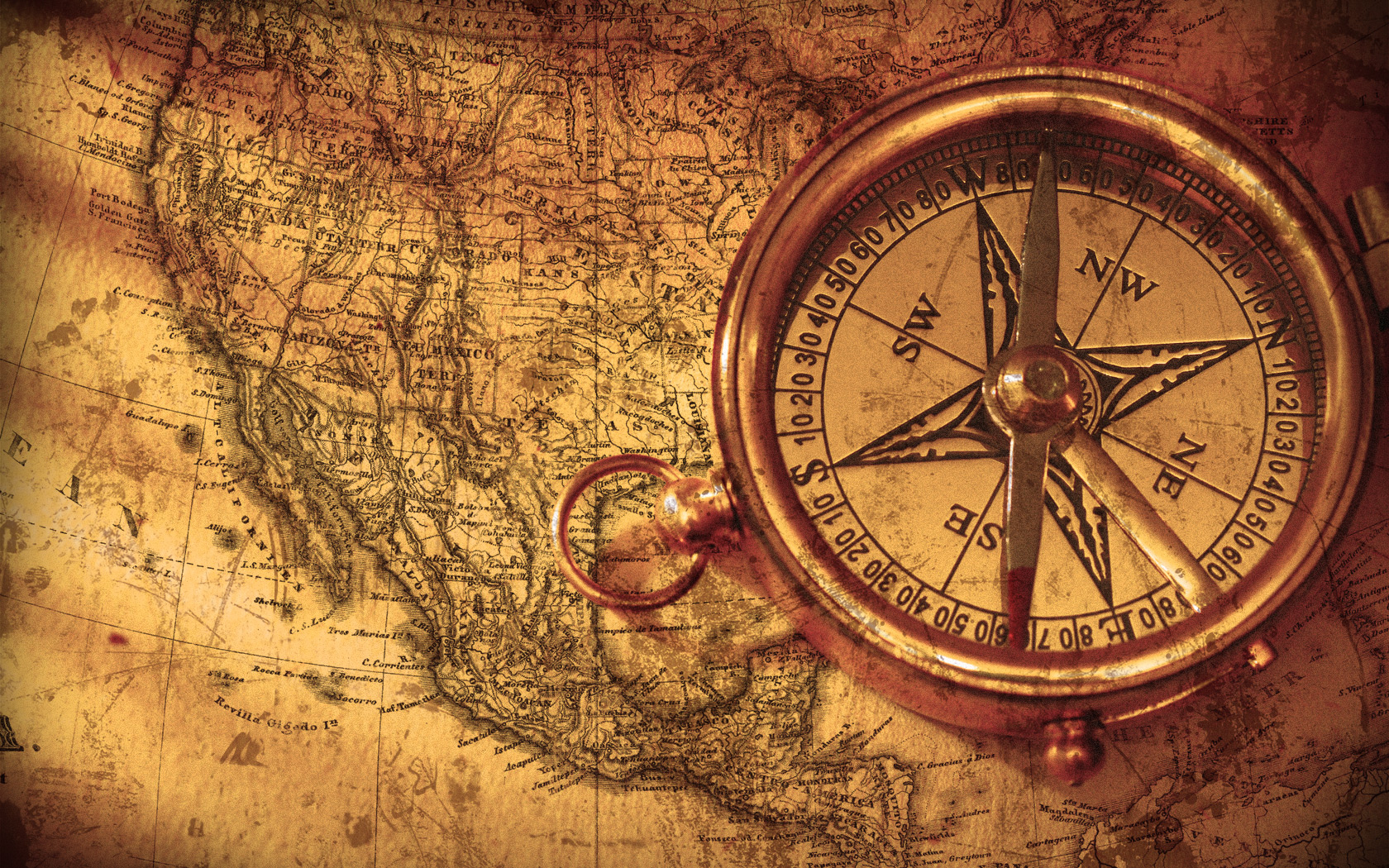The Magnetic Compass
Magnetic compasses, the most simple and common type of compass, are aligned to the earth's magnetic field. These compasses point to the earth's magnetic North Pole. (The magnetic North Pole is located in northern Canada but is continually moving, albeit slowly.) Magnetic compasses are very simple, easily built devices, but must be laid completely flat on a platform, require some time to adjust to a turned platform, and may suffer interference from local magnetic fields.
In order to adjust a magnetic compass to due or true north and toward the geographic North Pole, one must know the amount of magnetic declination or variation that exists in a specific region. There are online maps and calculators available that provide the difference in declination between true north and magnetic north for every point on the globe. By adjusting one's magnetic compass based on the local magnetic declination, it is possible to ensure that one's directions are accurate.
The Gyroscopic Compass
Gyroscopic compasses are aligned to the true North Pole and have a needle that spins in relation to the rotation of the earth. They are often used by ships or aircraft so that any local magnetic equipment doesn't interfere with navigation. Thus, they can quickly adjust to movements. This type of compass is usually set to point at true north, based on the direction of a magnetic compass, and then periodically checked with a magnetic compass to assure accuracy.
The History of the Compass
The earliest compasses were most likely invented by the Chinese in around 1050 BCE. They were created first for the purposes of spiritual life or developing a feng shui environment and then later used for navigation. It is disputed whether other cultures, such as some Mesoamerican societies, may have developed the idea for the magnetized compass first, also in accordance for spiritual aligning and not navigation.
Compasses were originally developed when lodestones, a mineral that has naturally magnetized iron ore, were suspended above a board with the ability to pivot and turn. It was discovered that the stones would always point in the same direction, and align themselves with the north/south axis of the earth.
 The Compass Rose
The Compass RoseThe compass rose is a depiction of orientation and direction that is placed on compasses, maps, and charts. Thirty-two points are depicted around a circle in equal intervals, marking the four cardinal directions (N, E, S, W), the four intercardinal directions (NE, SE, SW, NW), and the other sixteen secondary intercardinal directions (NE by N, N by E, etc.).
The 32 points were originally drawn to indicate winds and were used by sailors in navigation. The 32 points represented the eight major winds, the eight half-winds, and the 16 quarter-winds. All 32 points, their degrees, and their names can be found online.
On early compass roses, the eight major winds can be seen with a letter initial above the line marking its name, as we do with N (north), E (east), S (south), and W (west) today.
Later compass roses, around the time of Portuguese exploration and Christopher Columbus, show a fleur-de-lys replacing the initial letter T (for tramontana, the name of the north wind) that marked north, and a cross replacing the initial letter L (for levante) that marked east, showing the direction of the Holy Land.
We still commonly see the fleur-de-lys and cross symbols on compass roses today, if not just the simple letter initials for the cardinal directions. Every cartographer designs a compass rose a little differently, using different colors, graphics, and even symbols. Multiple colors are often used simply as a means of easily distinguishing the many points and lines on a compass rose.
360 Degrees
Most modern compasses utilize the 360-degree system of indicating direction on the compass with zero and 360 degrees representing north, 90 degrees representing due east, 180 degrees representing due south, and 270 degrees representing due west. Through the use of degrees, navigation is more accurate than through the use of the compass rose.
Uses of the Compass
 Most people use a compass casually, for instance with hiking or camping. In those situations, basic compasses like the thumb compass or other orienteering compasses that are clear and can be read over a map are suitable. Many casual uses where travel is over a short distance require basic markings for cardinal directions and a basic level of understanding compasses. For more advanced navigation, where large distances are covered and a slight variation of degrees would offset your course, a deeper understanding of compass reading is required. Understanding declination, the angle between true north and magnetic north, the 360 degree markings on the compass face, and your course-of-direction arrow combined with individual compass instructions requires more advanced study. For simple, easy-to-understand, beginners' instructions on how to read a compass, visit compassdude.com.
Most people use a compass casually, for instance with hiking or camping. In those situations, basic compasses like the thumb compass or other orienteering compasses that are clear and can be read over a map are suitable. Many casual uses where travel is over a short distance require basic markings for cardinal directions and a basic level of understanding compasses. For more advanced navigation, where large distances are covered and a slight variation of degrees would offset your course, a deeper understanding of compass reading is required. Understanding declination, the angle between true north and magnetic north, the 360 degree markings on the compass face, and your course-of-direction arrow combined with individual compass instructions requires more advanced study. For simple, easy-to-understand, beginners' instructions on how to read a compass, visit compassdude.com. 
No comments:
Post a Comment